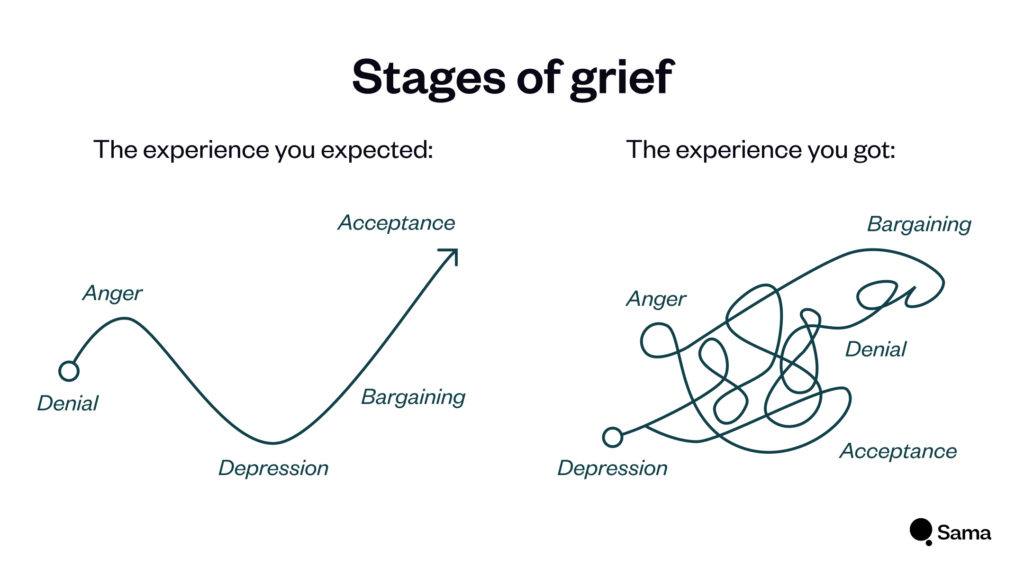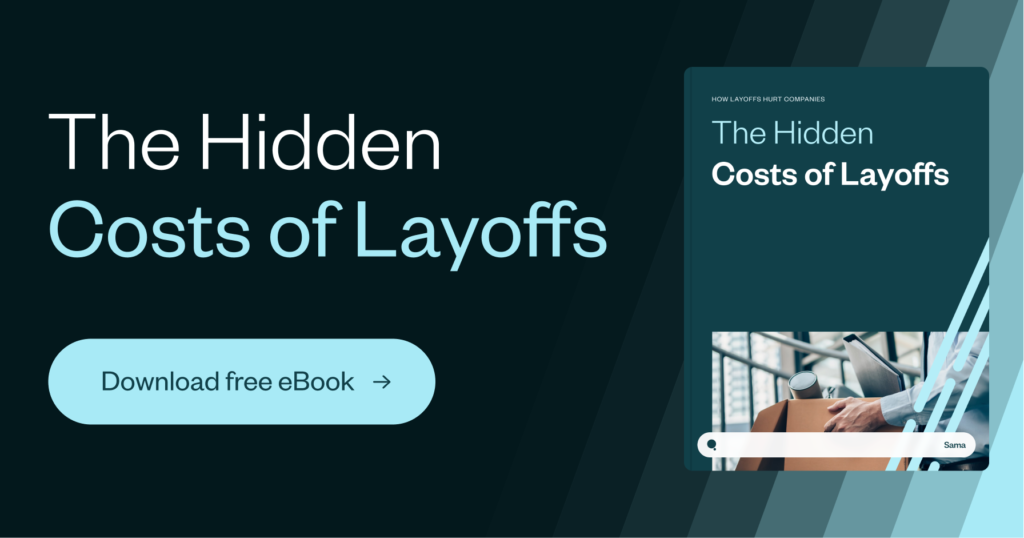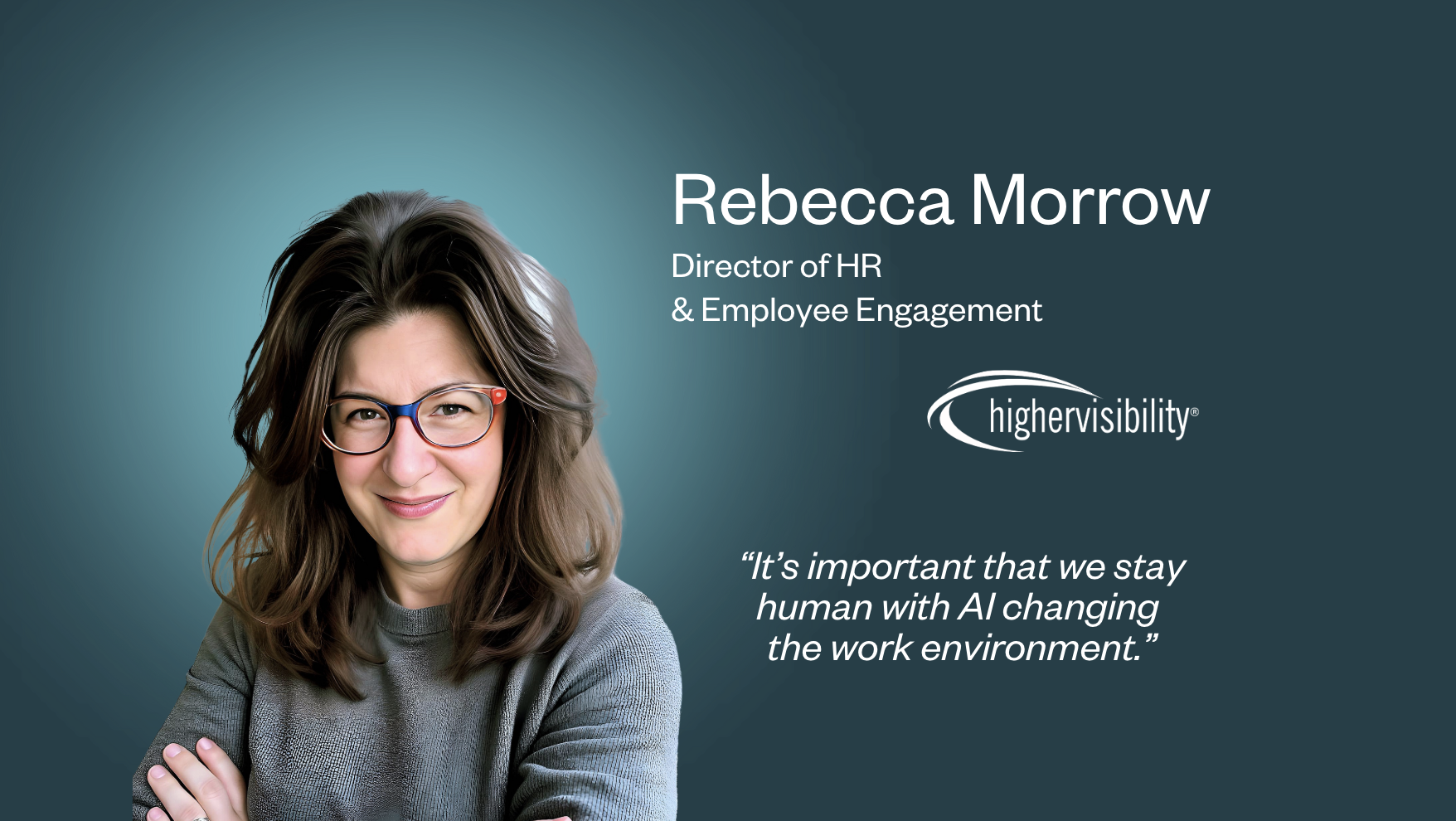Employee layoffs are an unfortunate but unavoidable part of the modern business landscape. If you’re reducing headcount, you’re likely buried in compliance and red tape, struggling to find time to prioritize team wellbeing.
We know that being laid off has a significant impact on mental health; it brings setbacks spanning Maslow’s full hierarchy of needs. In addition to lost income, it means saying goodbye to status, structure, and a feeling of security.
As with any major loss, people you’re letting go will experience the five stages of grief, cycling through a number of challenging emotions. Minimizing the impact on mental health sounds arduous, but there are some simple steps you can take to support your team.
How does grief show up in layoffs?

While Kubler-Ross’ model of grief (left) shows a process, many people experience a more erratic, fluctuating emotional response to redundancy (right). But the emotions involved remain the same. It’s crucial to understand how to appropriately support people you’re letting go through each of them.
“There’s been a mistake!” People generally start with denial, struggling to process the news and accept the reality of their situation, prolonging their suffering. Minimize room for denial with clear, concise communication, so everybody knows where they stand: what’s happening right now, and what the next steps are.
Anger presents in many forms – from directing resentment at employers to taking out frustrations on family. It’s commonly associated with a sense of abandonment; you should support leavers with personalized solutions, including career coaching to minimize feelings of injustice.
Some employees may search for ways they can stay in the business, and cause themselves great distress bargaining. Provide clarity on the reality of the situation to mitigate negative impacts on self-worth.
As reality sinks in, depression often hits. Many feel a sense of despair and anxiety, becoming demotivated and making it harder to find a new role. Access to mental health support minimizes harm, and coaching helps employees gain perspective and reassess their situation.
Eventually, everybody reaches acceptance, ready to take their next steps. Help people get there faster by providing wider outplacement support. Create a bank of resources, like CV writing tips and career planning webinars, to demonstrate options.
The impact of outplacement on employee layoffs?
Outplacement programs provide holistic, people-focused support for everyone within your organization – whether they’re leaving or staying. They differ between companies, but are aligned in their goal to minimize the potential impacts of redundancies and employee layoffs.
Outplacement includes:
- One-on-one and team coaching
- Career coaching
- CV-building workshops
- Interview training
- Skills assessment
- Job search assistance
Outplacement support transforms a traditionally daunting experience into one that is empowering for you and your employees. Sama coaching focuses on building resilience and helping people get back on track for their goals.
Grief management is critical to protecting everybody involved in a layoff cycle: make sure it’s top of your to-do list before layoffs begin.




